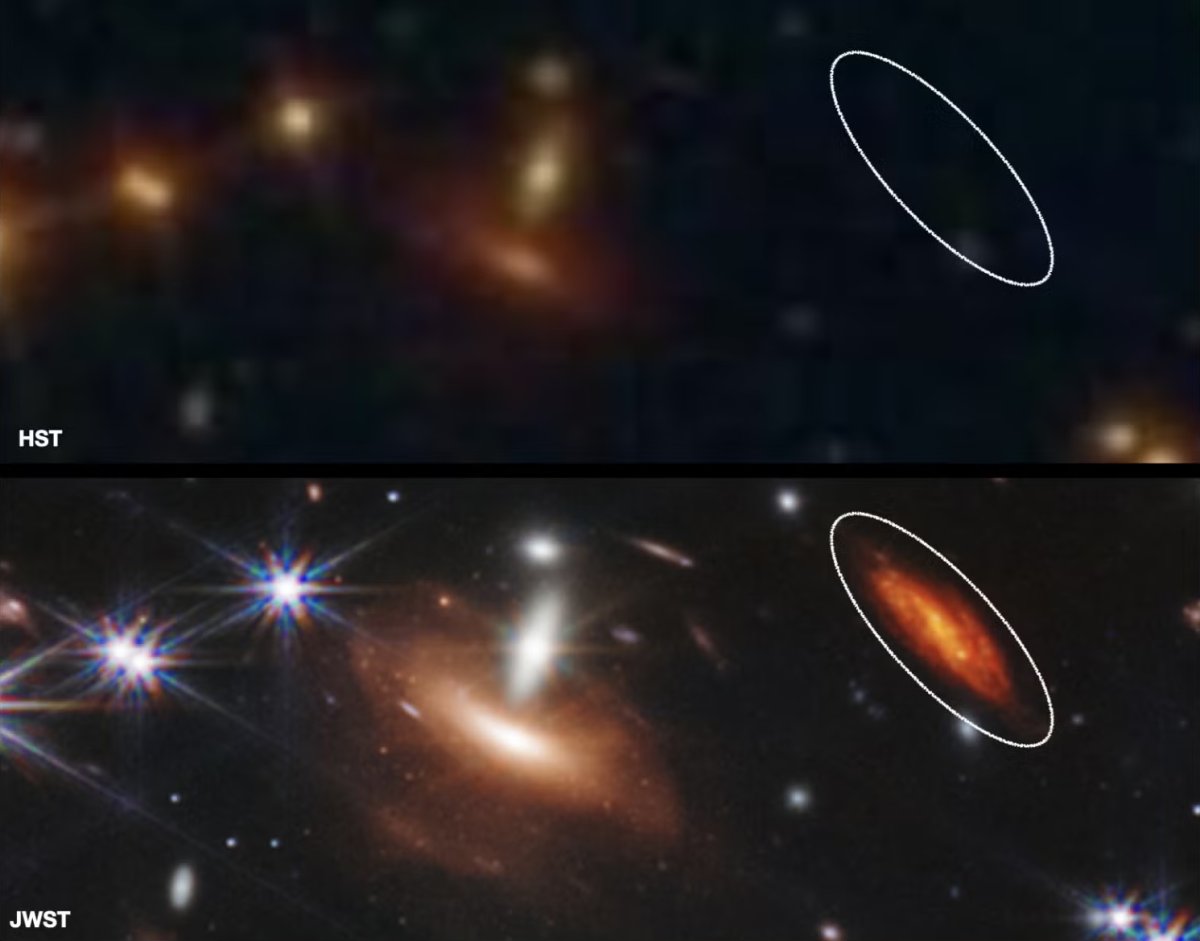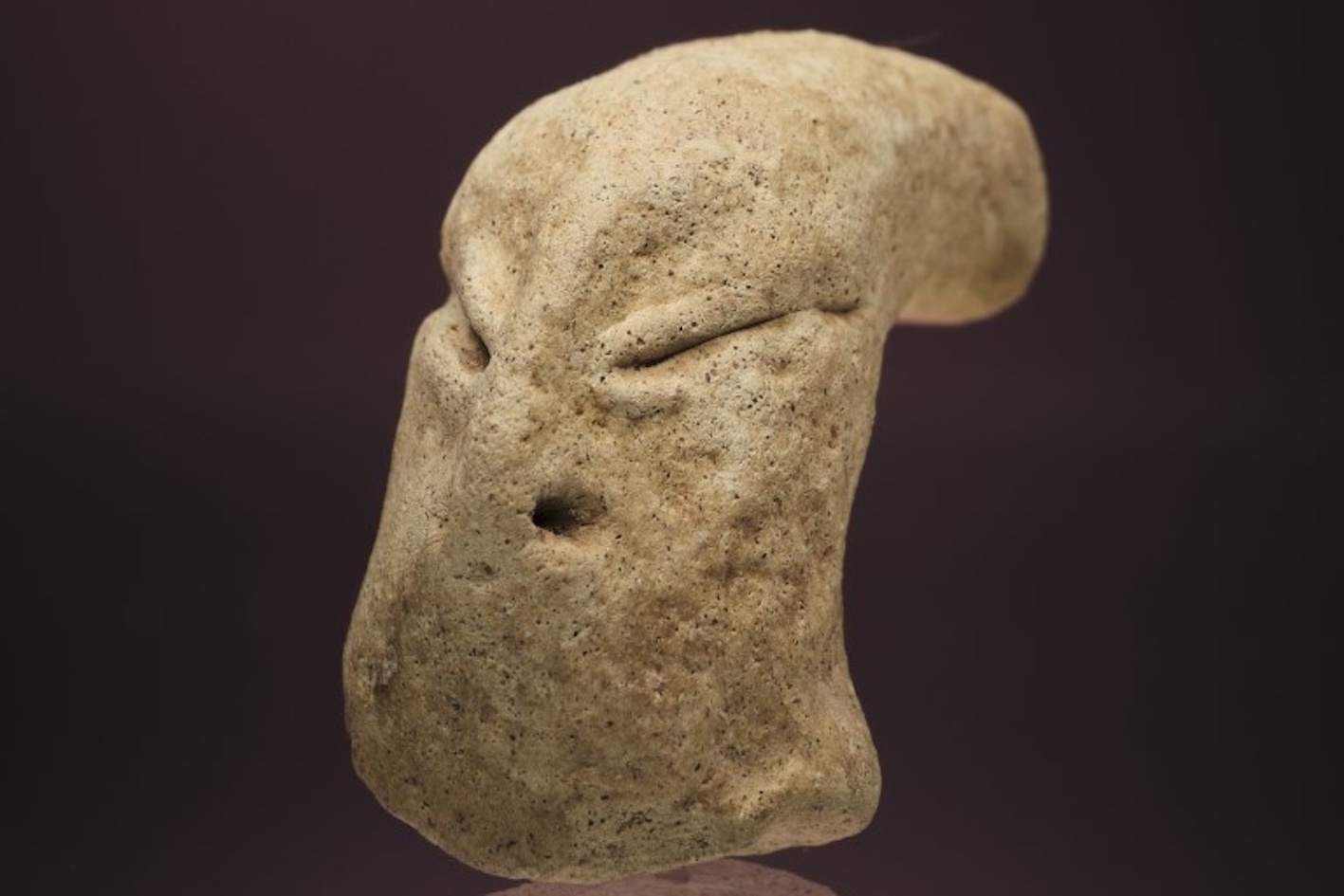Astrophysicists have been exploring the mystery of UFOs—no, not the "little green men" ones, but a strange type of large galaxy dubbed "Ultra-red Flattened Objects."
First discovered by University of Colorado Boulder astrophysicist Erica Nelson last year, they are unusually dusty—but may help us better understand how galaxies grow.
"They're so visually striking," said Nelson in a statement.
She added: "They're enormous red discs that pop up in these images, and they were totally unexpected. They make you say: 'What? How?'"

In their latest study, Nelson and colleagues studied data from NASA's flagship James Webb Space Telescope (JWST), which was launched back in December 2021.
The largest and most powerful space telescope ever built, Webb's infrared instruments are capable of seeing objects so distant, the light from them takes up to 13.5 billion years to reach us, effectively providing a window back into the infancy of the universe.
UFOs reside near the limit of how far (and how far back) earlier space observatories could peer—but telescopes like Hubble had missed them.
In images from the JWST Advanced Deep Extragalactic Survey (JADES), the researchers were able to identify 56 UFO galaxies.
"Prior to the launch of James Webb, we thought we would find really, really far away galaxies," said lead author and Boulder astrophysicist Justus Gibson in a statement.
"But we thought that closer to us, we already had a pretty good understanding of all the types of galaxies there are."
He added: "JWST allows us to see this type of galaxy that we never would have been able to see before. It tells us that maybe we didn't understand the universe as well as we thought."

The team's analysis—which combined the Webb imagery with computer modeling—revealed that UFOs are similar in both size and shape to our galaxy.
"You have these big bad disks—like our home, the Milky Way—flying around in space, completely invisible to us," said Nelson.
Unlike our host galaxy, however, these recently-identified galaxies are considerably dustier.
All galaxies, the researchers note, contain so-called interplanetary dust—the remnants of exploded stars—and such can be found throughout the Milky Way and even in Earth's solar system.

However, UFOs contain such a high concentration of this dust, relative to our Milky Way, that it blocks 50 times more light from escaping these galaxies.
In fact, most of the light that does escape UFOs lies in the infrared part of the spectrum, and what precious little visible light is emitted is at the red end—explaining both their color and why they were basically invisible to earlier telescopes like Hubble, but not Webb.
"Why on Earth do these galaxies have so much more dust than all the other galaxies? Got me," Nelson said, admitting that the findings so far offer more questions than answers.
However, she added, it is hoped that studying these UFOs will help astrophysicists better understand how galaxies grow and form new stars as they evolve.
Do you have a tip on a science story that Newsweek should be covering? Do you have a question about space? Let us know via science@newsweek.com.
References
Gibson, J. L., Nelson, E., Williams, C. C., Price, S. H., Whitaker, K. E., Suess, K. A., Graaff, A. de, Johnson, B. D., Bunker, A. J., Baker, W. M., Bhatawdekar, R., Boyett, K., Charlot, S., Curtis-Lake, E., Eisenstein, D. J., Hainline, K., Hausen, R., Maiolino, R., Rieke, G., ... Willott, C. (2024). JADES Ultrared Flattened Objects: Morphologies and Spatial Gradients in Color and Stellar Populations. The Astrophysical Journal, 974(1), 48. https://doi.org/10.3847/1538-4357/ad64c2
Nelson, E. J., Suess, K. A., Bezanson, R., Price, S. H., Dokkum, P. van, Leja, J., Wang, B., Whitaker, K. E., Labbé, I., Barrufet, L., Brammer, G., Eisenstein, D. J., Gibson, J., Hartley, A. I., Johnson, B. D., Heintz, K. E., Mathews, E., Miller, T. B., Oesch, P. A., ... Weaver, J. R. (2023). JWST Reveals a Population of Ultrared, Flattened Galaxies at 2 ≲ z ≲ 6 Previously Missed by HST. The Astrophysical Journal Letters, 948(2), L18. https://doi.org/10.3847/2041-8213/acc1e1




















 English (US) ·
English (US) ·